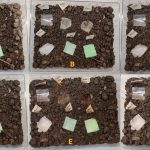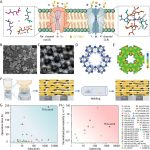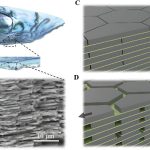Scientists develop new technique to boost performance of 2D electronic devices
A research team has made significant progress in the field of two-dimensional (2D) electrical devices by developing an innovative technique that improves the contact...
Scientists invent 100% biodegradable ‘barley plastic’
Researchers at the University of Copenhagen have created a new type of biodegradable plastic made from barley starch and sugarbeet waste.
This eco-friendly material, which...
Wear it, then recycle it: innovative dissolvable textiles from gelatin
Imagine a T-shirt you can wear a few times and then dissolve in water to create a new shirt.
This futuristic concept is now closer...
Researchers triple solid oxide fuel cell efficiency with new coating technology
A research team has made a breakthrough in improving the performance of solid oxide fuel cells (SOFCs).
They developed a catalyst coating that enhances SOFC...
Scientists develop new membrane to improve lithium extraction from salt lakes
In a significant breakthrough for lithium recovery, researchers from the Qingdao Institute of Bioenergy and Bioprocess Technology (QIBEBT) of the Chinese Academy of Sciences...
Scientists create efficient catalyst for green hydrogen production
Hydrogen (H2) is a promising fuel that can help reduce greenhouse gases, especially if it’s produced by splitting water (H2O) using renewable energy.
While this...
Scientists develop new strategy to stabilize zinc-ion batteries for longer life
Researchers have developed a new method to make zinc-ion batteries more stable and longer-lasting.
This breakthrough, led by Professor Hu Linhua from Hefei Institutes of...
Scientists create green floor to replace steel in construction
Researchers from the Department of Energy's Oak Ridge National Laboratory and the University of Maine have developed a groundbreaking, eco-friendly floor panel that could...
Scientists create tougher cement inspired by seashells
Engineers at Princeton University have taken inspiration from oyster and abalone shells to develop a new cement composite that is much stronger and more...
Hydrogen: The green energy game-changer?
Green hydrogen has the potential to transform our energy system, addressing supply issues and reducing emissions.
But its success depends on how cheaply it can...










